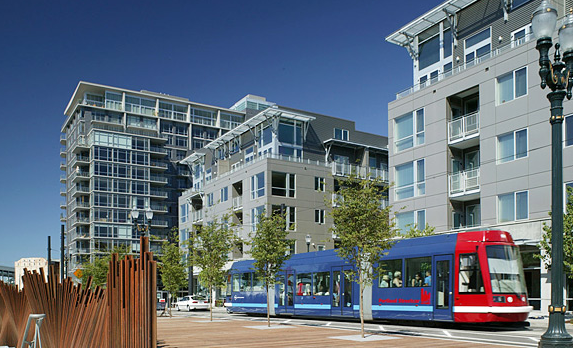Land within one-half mile of frequent transit would be automatically upzoned for higher density development under a proposal before the Oregon legislature.
Senate President Peter Courtney (D-Salem) unveiled a bill this week that would zone properties within one-half mile of transit to a maximum of 75 units per acre, according to Willamette Week. Properties within one-quarter mile of light rail would be rezoned to an upper limit of 140 units per acre. That's equivalent to about a six-story building.
Currently in Portland, density is only about seven people per acre. Low residential density around transit means access to transit is restricted and it can lead to housing price appreciation that helps fuel gentrification.
"What’s the point of providing frequent transit if you exclude people from living nearby?" asked Ben Fried, a spokesman for TransitCenter, the national advocacy organization. "Transit works best when people can walk to their stop, and with this policy many more people will be able to live within walking distance of good transit."
The legislation would not require land by transit to be developed at high densities, but merely allow it.
The bill is one of several progressive housing bills before the legislature this session. A proposal from House Speaker Tina Kotek (D-Portland) would ban single-family-only zoning, allowing four-unit buildings in every neighborhood. An additional measure from Kotek and Courtney, which recently passed in the Senate, offers some protections for tenants against rent increases, limiting them to one per year. It also bans evictions without cause.






